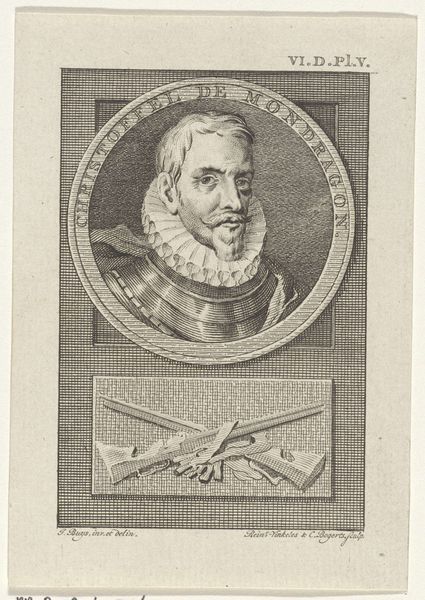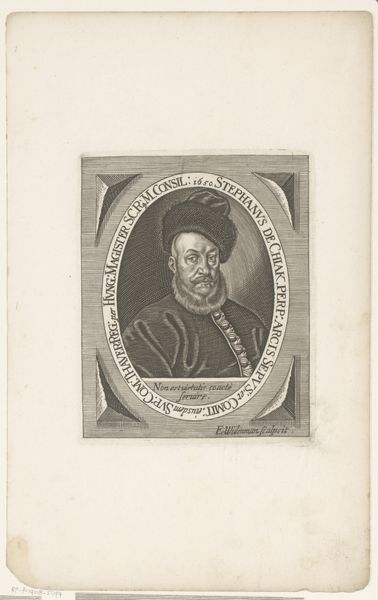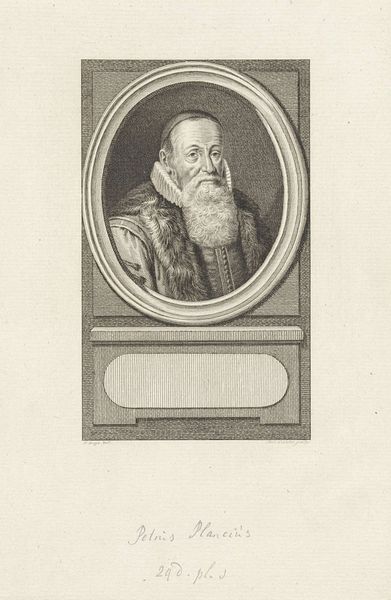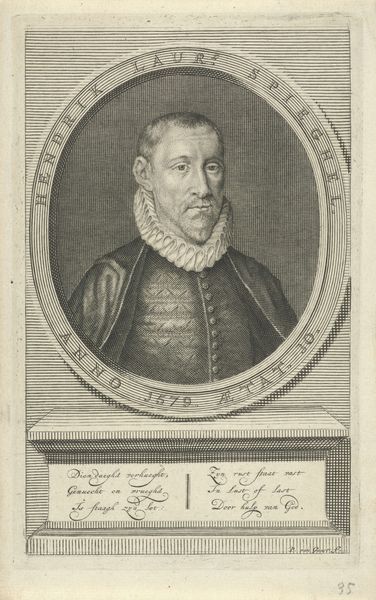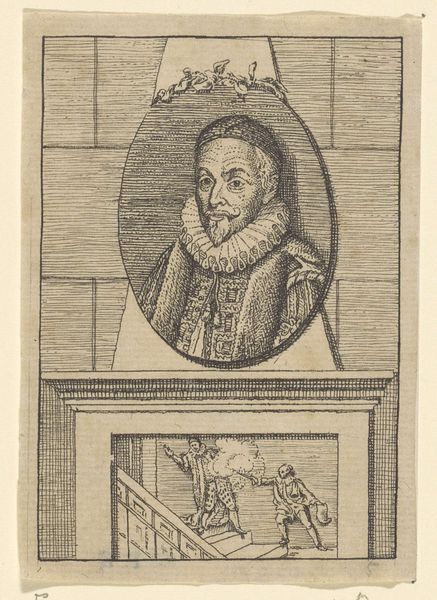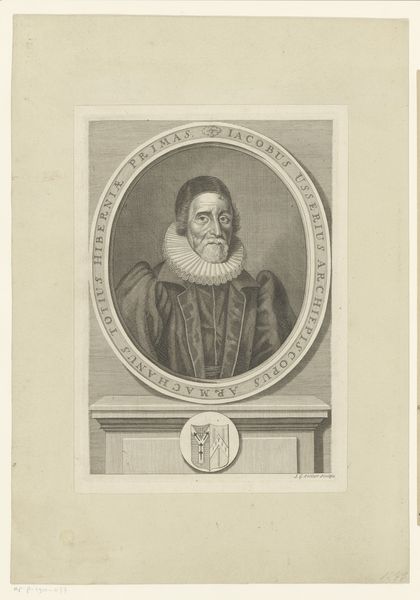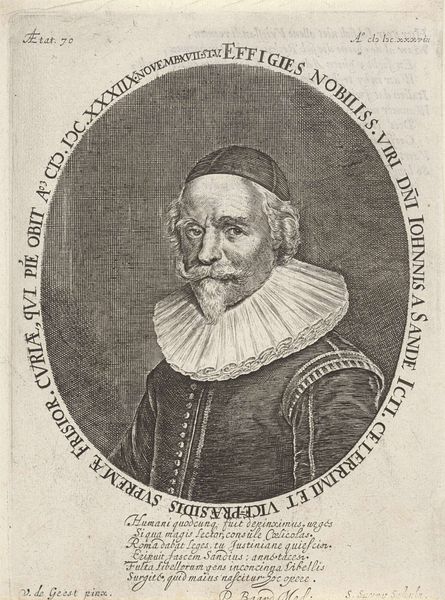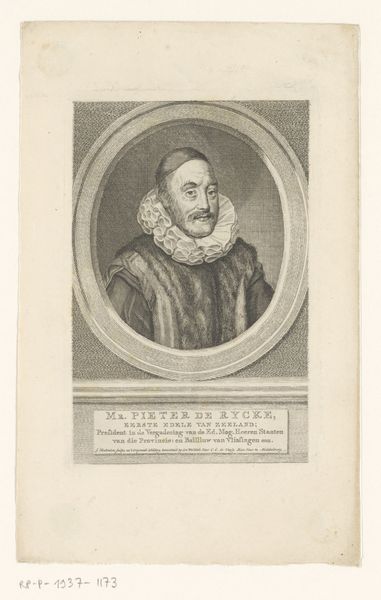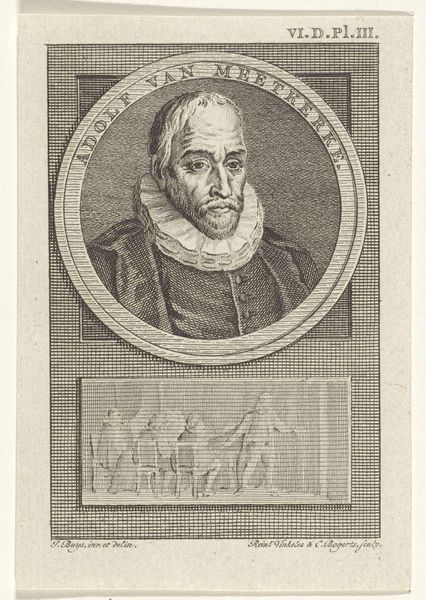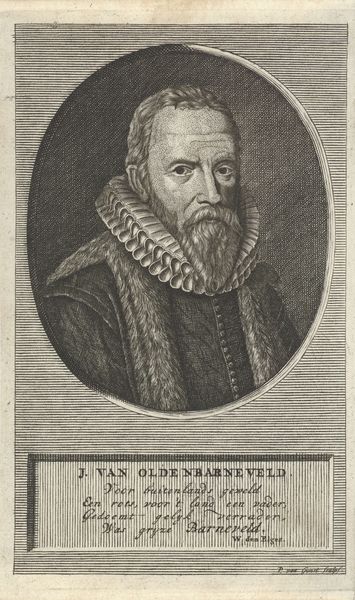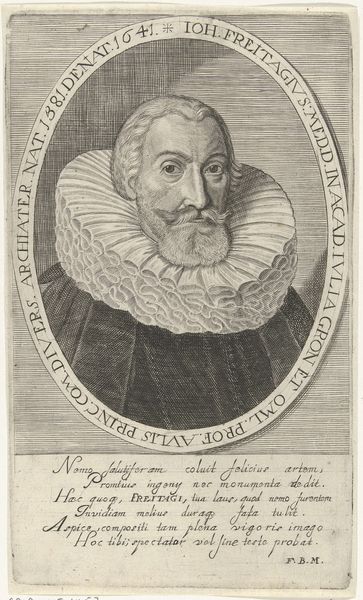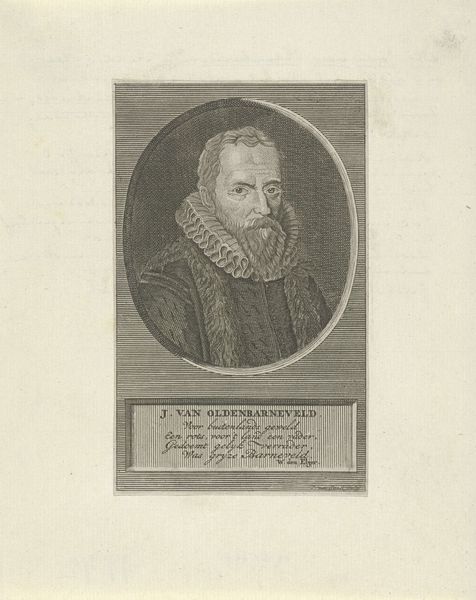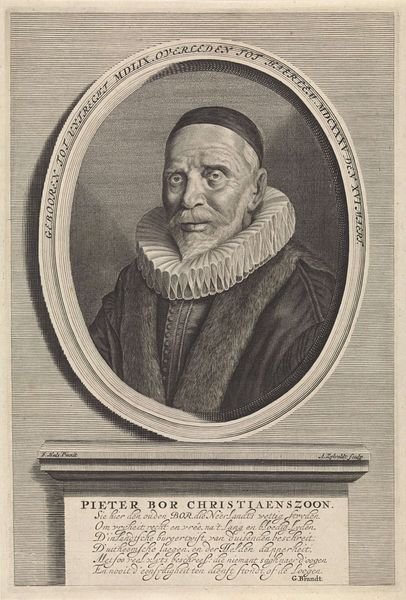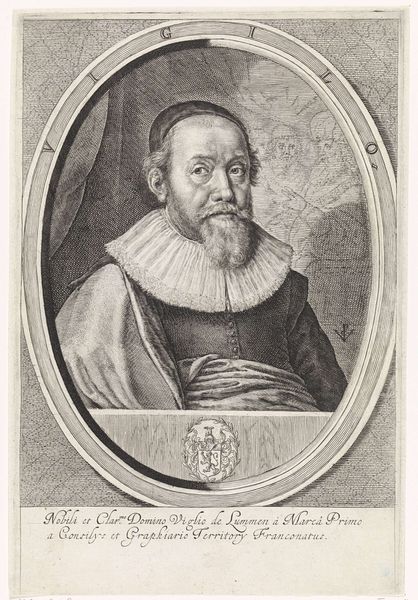
Dimensions: height 113 mm, width 77 mm
Copyright: Rijks Museum: Open Domain
Editor: This is Reinier Vinkeles's "Portret van Johannes Wtenbogaert," made between 1783 and 1795. It's an engraving on what looks like aged paper, housed in the Rijksmuseum. The portrait is quite formal, with the subject surrounded by books. How do you interpret this work, thinking about the materials and how it was made? Curator: Well, given my interest in the material processes, the very *act* of engraving is significant here. It's not just about replicating an image; it's a labor-intensive process. The lines etched into the metal plate, the pressure applied during printing—these speak to the production, don’t they? Also, what about the paper itself? Its quality, texture and origin--how does it speak to social status? Editor: That's a really interesting point. I hadn't considered the paper so specifically. So, you're saying that the value lies not just in the image, but in understanding the process and resources? Curator: Precisely! Think about the engraver: Vinkeles. Where did he learn this skill? Who commissioned the piece, and why choose engraving over, say, painting? Engraving allowed for reproduction, wider distribution and, ultimately, democratization of the image. Does that suggest an evolution of the cultural landscape and the consumption of images at that time? Editor: It definitely puts a different spin on it! The books at the bottom also suddenly gain new meaning; their materiality linking to knowledge, education, status… Curator: Exactly! And it prompts the question: Were these actual books owned by the subject, or just props? And who would possess and cherish such an engraving? Consumption patterns give it so much context. Editor: I’ve never thought of a portrait like this, focusing so much on *how* it came to be. Curator: That shift in focus is critical. Once we focus on the processes and context, art history becomes so much more accessible, no? Editor: Absolutely, understanding the process involved reveals hidden social stories of production and value. Thanks!
Comments
No comments
Be the first to comment and join the conversation on the ultimate creative platform.
